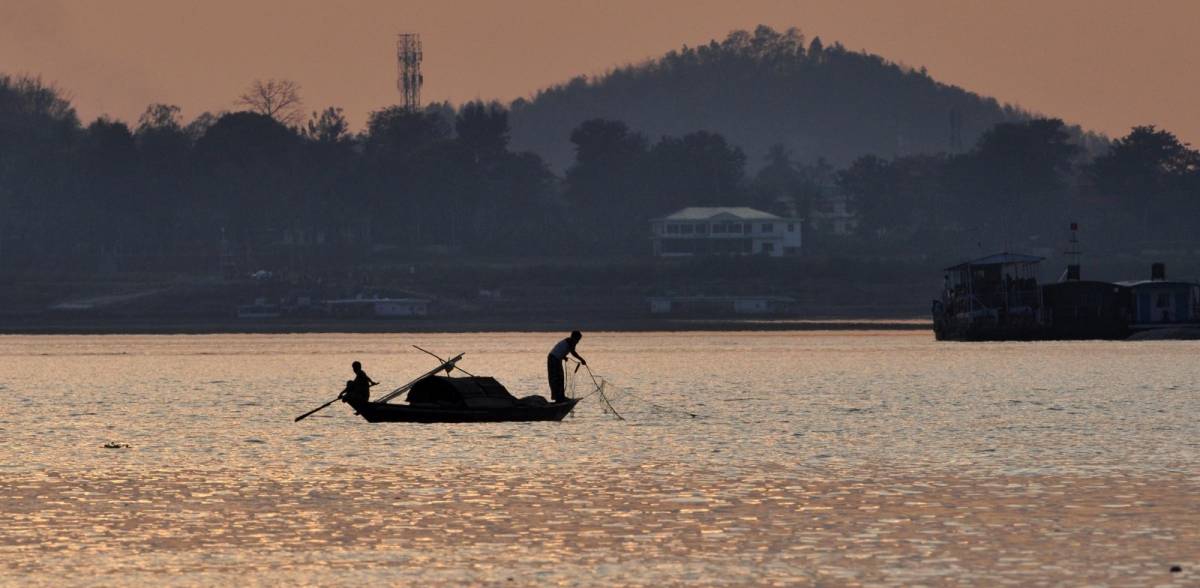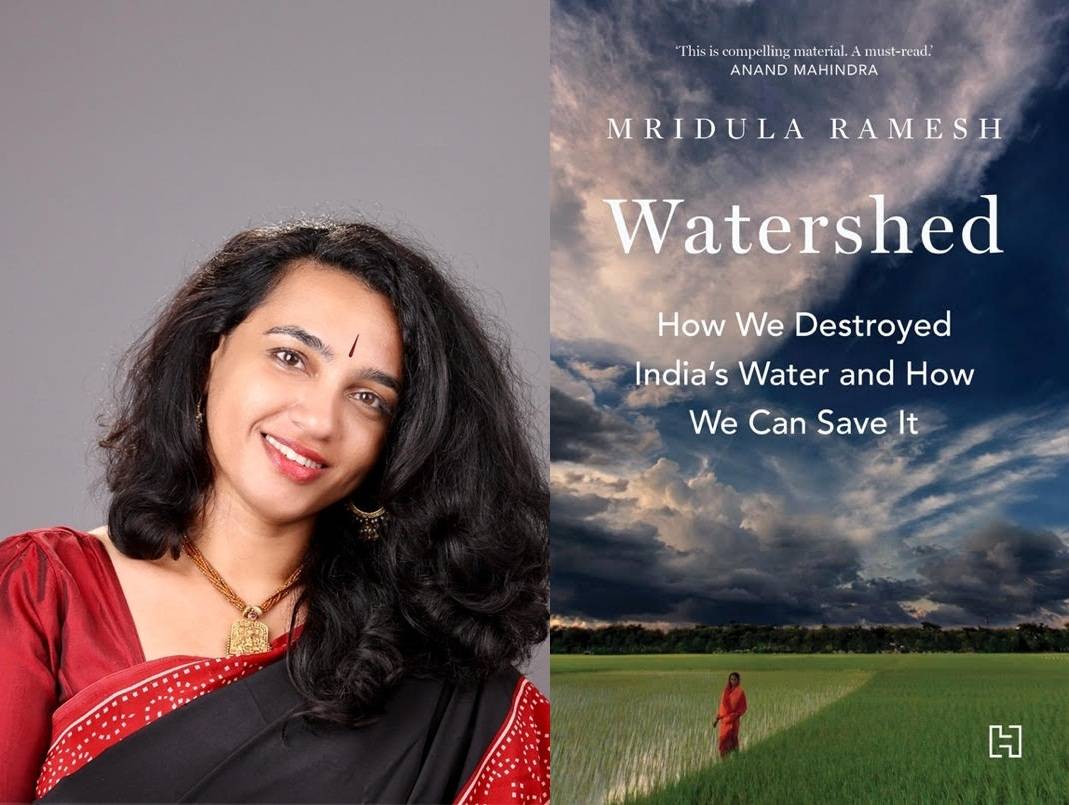Arsenic gets entry into the food chain through the use of pollutant-contaminated water for irrigation, and this plays a major role in deciding the agricultural income of this village…reports Sumit Yadav
“The water in our village is just poison. We can’t even cook our food using this water, forget drinking it,” says an exasperated Munni Devi, as she herds her buffaloes by a canal in her village.
Around 70 km from Lucknow, in Unnao district’s Sikanderpur Karan block, is the village of Gudsar. Residents here, like 48-year-old Munni Devi, are simply frustrated e frustrated that the lack of a basic necessity like drinking water can make their lives this miserable.
Harrowed residents resigned to fate
“We are poor people. We cannot afford to buy water. Whenever we have relatives coming over, we have to go fetch water from 2km away. Because of the smelly, polluted and rotten water in our village, relatives have almost stopped visiting us,” says Munni Devi, who lives with her family of eight e three sons and three daughters, and husband Ram Lal who works as a labourer.
Pointing at her buffaloes sitting in the water, she says, “Look at them. No matter how healthy a buffalo is, the water in our village will just make them sick and weak. If an animal won’t drink water properly, how is it supposed to stay healthy?”
Sitting next to her, Anita Devi says the water in their village barely ever quenches thirst.
“When we go outside the village somewhere, we drink lots of water because the water here just feels light,” she says.
Sitting in the veranda of his house, 62-year-old Dayaram Lodhi echoes their sentiments.
“The water never used to be like this,” Lodhi said. “The water started getting contaminated after the canal came up next to our village.”
Picking up a bottle of water, Lodhi adds, “What you see now is crystal clear water. Wait for a while, and this water turns completely yellow. It’s so polluted that even a metal bucket gets completely ruined.”
Lodhi, who has 15 members in his family who consume around 50 to 60 litres of water a day, says the quality of water started turning bad around 20 years ago. Another Gudsar resident Ram Prakash Verma echoes this claim.
“Once this canal came up, things changed. Earlier, the groundwater level wasn’t this bad either.”
As per a report of the State Water Resources Agency, in Uttar Pradesh, a total of 28 districts had a problem of arsenic contamination in groundwater, including Unnao. In March, 2019, Ministry of Drinking Water & Sanitation and Ministry of Water Resources, River Development and Ganga Rejuvenation had jointly filed an affidavit before NGT. The affidavit highlighted the arsenic affecting a population of 1.3 crores in Uttar Pradesh.
The 58-year-old, who owns roughly 2.5 acres of land, says farming had become increasingly difficult because of the water quality, which had deteriorated primarily due to fluoride and arsenic contamination.
Arsenic gets entry into the food chain through the use of pollutant-contaminated water for irrigation, and this plays a major role in deciding the agricultural income of this village.
“The wheat harvested last year was completely ruined. The level of chemicals in the canal water is so high that any form of vegetation simply dies. Not only is the quality of wheat and rice poor, the yield is also below average. We are forced to sell the harvest at low prices. The contamination has now seeped deep into the groundwater,” he says.
Yogendra Kumar, another resident of Gudsar, shows this reporter a plastic box.
“Because of the water here, the box has turned red. You can only imagine what the water could do to the human body,” says the 24-year-old, adding that there’s a good possibility that at least one or two members of each family in the village of 400 has some form of stone disease. “The pollution in the water here has only increased the occurrence of diseases among residents. Most people just stay sick after falling ill.”
Non-functional hand pumps
Criticising the inaction by authorities with regard to tackling this water crisis, Kumar says: “Whenever we complained to any authority, we only received false promises. There are around 15 high-quality hand pumps in the village, but none of them work. The water drawn from traditional hand pumps is simply awful. The RO plant set up here three years ago worked for first six months and then didn’t give one drop of water.”
Village pradhan Amresh Kumar, too, spoke about the RO plant: “Since it was a plant set up by the Uttar Pradesh government, the panchayat had no funds for it.”
In rural areas, the India-Mark hand pumps are supposed to be rebored. “But no such repair or reboring work has been done on the hand pumps,” says Amresh Kumar, adding that he was given charge of the village only recently.
For daily drinking purposes, residents of Gudsar rely on the hand pumps, which give out highly contaminated water. But villagers now say they are getting used to it.
“Who can afford to get tanker water every day? One can arrange for tankers for weddings and other functions, but for daily use, hand pumps are all we have,” says a villager.
Fluoride, arsenic contamination
Dr Alok Pandey, the physician at the Unnao district hospital said that the level of fluoride in water must not exceed 1.5mg/litre, while that of arsenic shouldn’t exceed 0.05mg/litre.
“If the fluoride level exceeds the permissible limit, it can prove fatal. Excess fluoride can lead to misshapen arms and legs, can cause weakness, fever and can also lead to various stomach and dental ailments,” he explains.
Incidentally, the arsenic level in Unnao district exceeds the 0.05mg/litre limit, as per National Green Tribunal (NGT) data. In July, 2014 a sample testing run by Indian Institute of Toxicology Research, identified 20 districts of Uttar Pradesh, including Unnao as ‘severely toxic’ zones, based on the arsenic concentration in groundwater.
Mohit Chak, the superintendent engineer of the Unnao water department, says there are 53,816 hand pumps in Unnao, which has a population of over 25.7 lakh. In Sikanderpur Karan block, 26 RO plants were set up.
Asked about the condition of the RO plants in Sikanderpur Karan, Chak claims he did not have any knowledge regarding their non-functioning.
“Once I get information, work to get them repaired will be initiated,” he says, adding that of the 319 villages in the block, 76 were affected by excess fluoride.
“As many as 1,455 of the 4,355 villages in Unnao face issues related to excess fluoride in the water. Of these, 28 villages face TDS (total dissolved solids) pollution.”
Regarding provision of pure drinking water, the superintendent engineer said that the tender process for the central government’s Jal Jeevan Mission had yet to begin at the block level. The scheme aims to provide drinking water directly to every household by 2024, and Chak says the results of the scheme will start to show. However, keeping in view the serious health consequences, NGT in the order dated 28.01.2020 had set a deadline for completion of total remedial work by December, 2020.
As far as the Jal Jeevan Mission tender process is concerned, the official says it will be done by July and work for the same will begin thereafter.
Tanneries to blame
Local residents blame the various tanneries in the region for the contamination of the water. They insist that these tanneries, located in the industrial areas of Sikanderpur Karan block’s Banther, release chemicals in massive quantities into the canals near the villages. The water in these canals seep into the groundwater, further contaminating that, as well.
Rituraj Sahu, the managing director of the CETP (common effluent treatment plant) that filters contaminated water discharged by factories in the industrial area, says there are several factories and tanneries that release chemicals into nearby water bodies. To filter the chemical-laden water, Sahu says the CETP has a capacity of around 4.5 MLD (million litres per day).
“Currently, the plant filters around 1.5 MLD of contaminated water. None of it is released into the nearby canals of Banther,” Sahu claims.
However, as per a report of the Central Pollution Control Board, 35.42 MLD of contaminated water is released into this canal.
The NGT, too, had questioned the Uttar Pradesh government about “inadequate” progress in provision of drinking water.
Nevertheless, the situation on ground remains poor for villagers. People still have to fetch drinking water from over 2km away.
“The situation has now become such that people are refusing to get their daughters married to anyone from our village,” rued one villager.
ALSO READ-Water crisis all set to hit Pakistan






